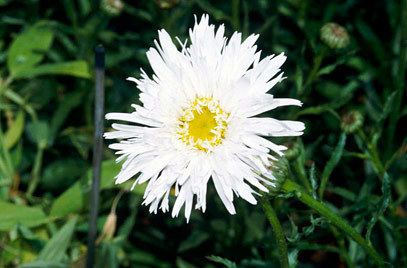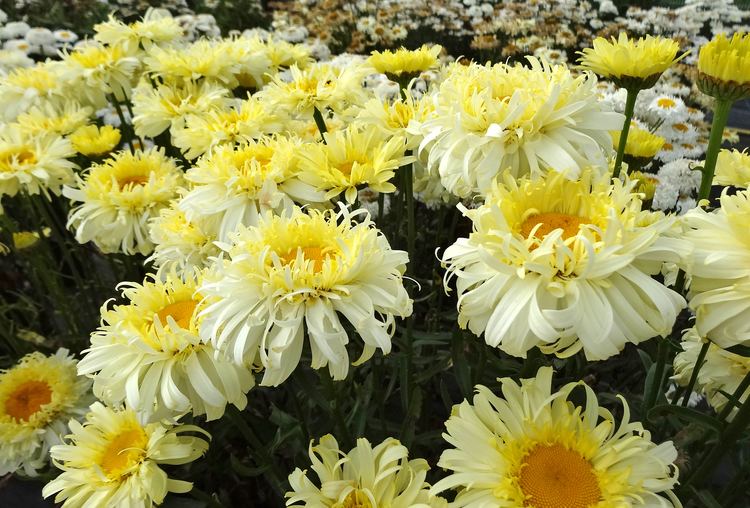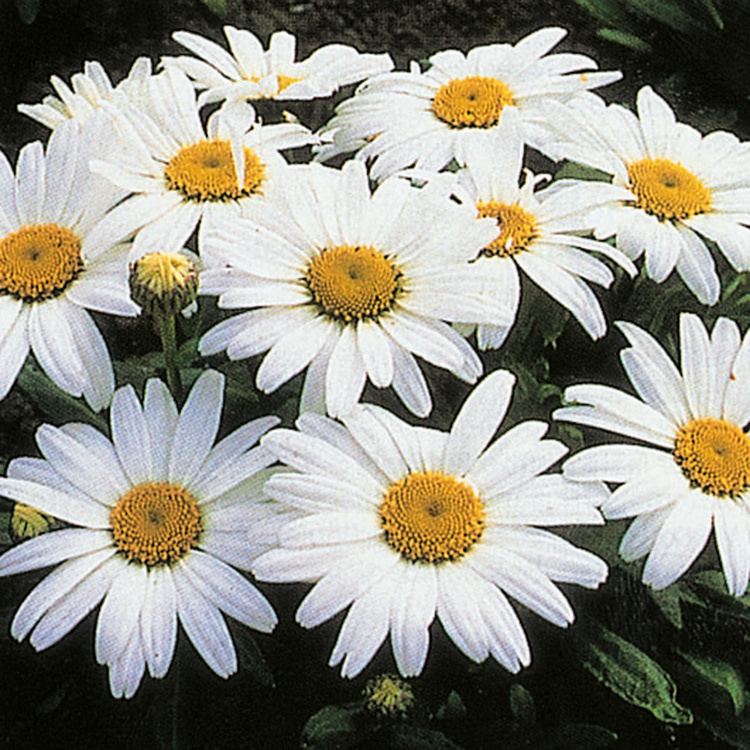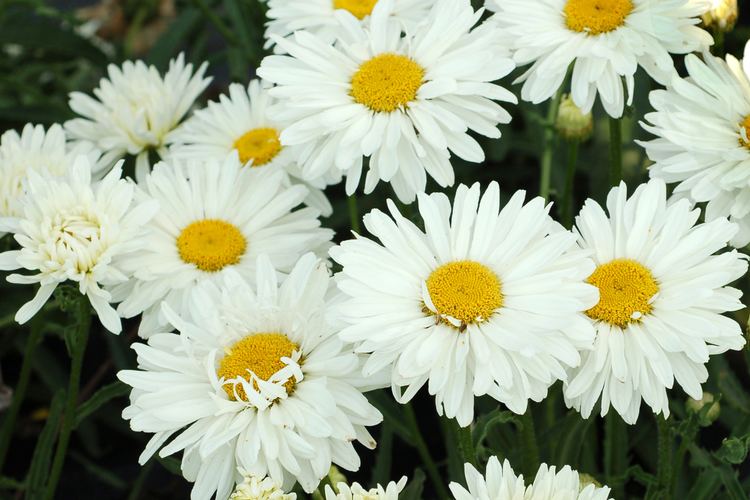Higher classification Anthemideae | Scientific name Leucanthemum Rank Genus | |
 | ||
Lower classifications Oxeye daisy, Shasta daisy, Leucanthemum maximum | ||
Plant portrait oxeye daisy leucanthemum vulgare
Leucanthemum is a genus of flowering plants in the aster family, Asteraceae. It is mainly distributed in southern and central Europe. Some species are known on other continents as introduced species, and some are cultivated as ornamental plants. The name Leucanthemum derives from the Greek words λευκός - leukos ("white") and ἄνθεμον - anthemon ("flower").
Contents
- Plant portrait oxeye daisy leucanthemum vulgare
- Best perennials leucanthemum whoops a daisy shasta daisy
- Description
- Ecology
- Diversity
- Hybrid
- References
Best perennials leucanthemum whoops a daisy shasta daisy
Description

Leucanthemum species are perennial plants growing from red-tipped rhizomes. The plant produces one erect stem usually reaching 40 to 130 centimeters tall, but known to exceed 2 meters at times. It is branching or unbranched and hairy to hairless. Some species have mainly basal leaves, and some have leaves along the stem, as well. Some leaves are borne on petioles, and others are sessile, attached to the stem at their bases. They vary in shape, and some are lobed or toothed.

The flower head is solitary, paired, or in a group of three on the stem. The base of the head is layered with up to 60 or more rough-edged phyllaries. The Leucanthemum head has about 13 to 34 ray florets of various widths, occasionally more, and rarely none. The ray florets are always white but fade pink with age. The head has over 100 yellow disc florets at the center. The fruit is a ribbed, hairless cypsela.
Ecology

Leucanthemum species are used as food plants by the larvae of some Lepidoptera species, including the bucculatricid leaf-miners Bucculatrix argentisignella, B. leucanthemella, and B. nigricomella, which feed exclusively on Leucanthemum vulgare.
Diversity
Species include:

